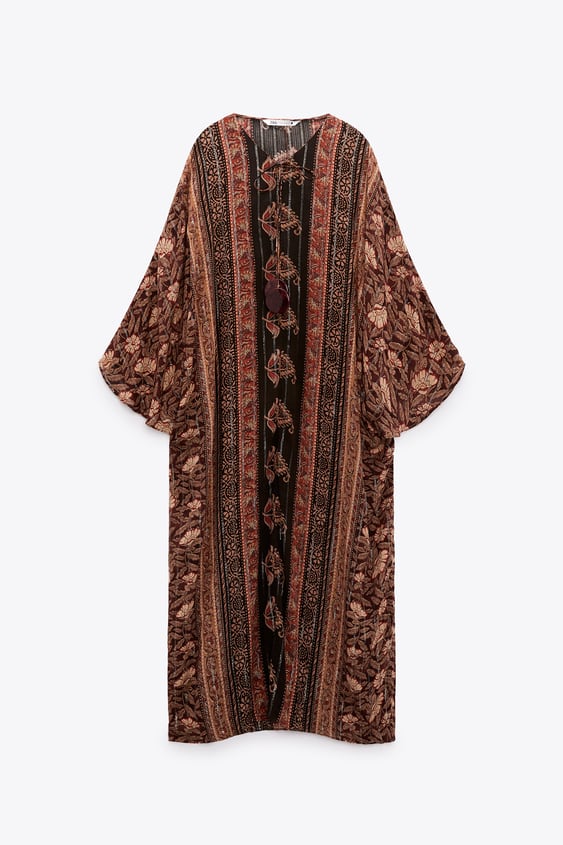
The Short History Of Kaftans
A symbol of exoticism and a bohemian life The term “kaftan” has evolved over time “kaftan” has become the general term for any loose-fitting robe or tunic–often used to describe many different kinds of garments from Middle Eastern and North African origination (the djellaba, abaya and burnouse are just a few examples). A true kaftan is a narrow cut, long , robe with full sleeves, with either an open neck, or completely opened to floor, and sometimes buttoned; the enormous robe without clearly defined sleeves, commonly known as”a kaftan” is actually much closer to an abaya.
Kaftan is a Persian word, and the dress is believed to originate with Ancient Mesopotamia. The Ottoman sultans of the 14th through the 18th century wore extravagantly decorated Kaftans. They were also offered as gifts to high-ranking dignitaries and generals. Kaftans can be made from nearly any material, but the majority consist of silk, wool, or cotton , and are often tied by the sash. Kaftans are worn by men and women in variations all over the Iranian plateau, through North Africa, and into West Africa. Most often, they are worn in hot climates its loose-fitting silhouette assists in proper ventilation, thereby decreasing body temperature (though Russians have a similar dress, which is also known as a kaftan composed of fur).
When I was in Europe as well as North America, authentic kaftans were worn only by a handful of individuals and travelers who brought them back from exotic destinations as part of the trend in Orientalism and Turkish style interiors in early 19th-century. It was not until the 1950s and early 1960s that this style of dress began appearing in high fashion when it was adapted by French couturiers–including Christian Dior and Balenciaga–as a new form of loose-fitting evening gown or a robe over matching trousers. By the year 1966, Vogue described the kaftan as an essential garment for any member of the fashionable class and photographed “the beautiful people” in an array of imported traditional styles and western variations “Here can be the fastest popular styles that have ever been invented The comfort of seraglio clings to them; leisure and repose emanate from the kaftans. The traditional robes of the Near East, they’re now appearing all over the modern world, inspired by amazing dressmakers and each woman’s newfound appreciation for beauty. …”
The kaftan style was well suited to the fashions that followed in the following decade, it was a simple design that could be embellished or heavily patterned or sleek and minimal (as as seen in the fashions from Halston at the end of the 1970s). Women entertaining at home wore it as a “kaftan dress,” while simultaneously, more traditional designs were being introduced to Europe and the United States and Europe by young people who had traveled the new “Hippie trail” from North Africa to Afghanistan. The popularity within America of the kaftan — from the high-end to mass market and cheap imports – stemmed from its exoticist connotations as well as the easy-to-wear ease of these pieces. From the mid-1970s through to the last decade, the kaftan disappeared from most haute couture catwalks, becoming an accessory for the resort style.
Tom Ford
Shortened to micro-mini length, Tom Ford took the kaftan form to the realm of the sexually edgy in Gucci Spring 1996, as designers seeking to inject their collections with the “oriental” touch and nostalgia for the 1960s came back to the many possibilities of this dress. Fashion designers such as Temperley and Matthew Williamson have continually reanimated the kaftan’s Bohemian appeal, while other designers such as Naeem Khan and Elie Saab have brought the kaftan to the red carpet with ornately decorated and beaded versions. The striking and graphic style of the kaftan enables designers to each put their unique design on it, but keeping the same ease of elegance and comfort that makes it so attractive to women around the world.

